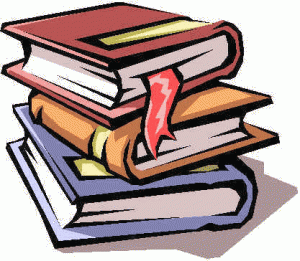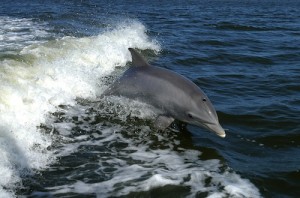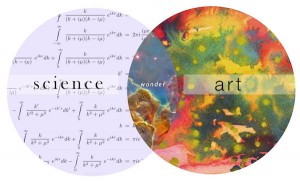by Naomi L. | March 18, 2015 | Blog, Creative Writing |
I mentioned at the beginning of January that it would be difficult for me to keep up with writing because I would be particularly busy this year. I’m currently in the middle of pursuing a Master’s degree in Marine Ecology, so much of my time is being occupied with science. And with the various types of writing I’ve been trying to manage at the same time, that’s gotten me thinking about the similarities and differences between writing artistically and writing scientifically.
So to take advantage of my position between both worlds, I’d like to start discussing on my blog the comparisons between art and science. There are so many points to note, however, that the best way to go about it would be to create a whole subcategory around this topic! That’s why I decided to distribute my observations among several posts. To start off, here’s a brief discussion on the similarities and differences between art and science when it comes to reading. Enjoy!
How the Art is like the Science
Whether it’s for artistic inspiration or scientific knowledge, reading is reading at its core, simple as that. We read for one main reason: to acquire new ideas and information. That’s why when we read prose of any form, we always look for the same fundamental outline behind the content.
The first thing we seek is that big opener: a killer title and a few great introductory lines to hook us from the get-go. These are what help us decide whether the rest of a piece is worth reading, so a good first impression is always important. A striking title will draw our attention to the piece as a whole, and the first few lines after that will give us a sense of the author’s style and direction for the rest of the work.
From there, we move on to the introduction. Whether it’s the opening scene of a novel or the initial paragraphs of a scientific paper, a good introduction properly sets the tone and establishes the theme of the work, so that by the time we get to the heart of it, we understand what it is we’re reading about. That’s when we want to start seeing action. Conflict exists as much in fantasy worlds about magic beings as it does in the real world of scientific discoveries, and we want to see it resolved through the characters’ or the author’s methods until a conclusion is reached either through climactic scenes and denouement or analyzed results and discussions. And let’s not forget that satisfying takeaway feeling we seek when the reading is done!
So reading fiction and reading non-fiction are actually quite similar in many ways. But perhaps it’s in their differences that the true beauty lies…
How the Art is unlike the Science
Of course, outside of a basic structure, art and science differ significantly in their overall purpose. In one, we seek to lose ourselves in narrative, to feed our imagination with fictitious accounts of people who (in most cases) exist only in our heads. In the other, we seek to fill our minds strictly with the truth and consequently expand our knowledge and understanding of the real world around us. Perhaps that’s the greatest deciding factor when choosing which to read: whether we want to engage in fiction or reality.
 Art is intended to appeal to our creative desires. We indulge in artistic composition because it offers an escape from the common and tedious details of everyday life. Even true stories offer this release when narrated creatively enough, which is why even the most fascinating of real-life tales can only be considered such when told with a touch of art to embellish the facts. Literature is first and foremost a form of art, and thus any written work takes skill in creative technique in order to draw us in and keep us hooked to the very last word.
Art is intended to appeal to our creative desires. We indulge in artistic composition because it offers an escape from the common and tedious details of everyday life. Even true stories offer this release when narrated creatively enough, which is why even the most fascinating of real-life tales can only be considered such when told with a touch of art to embellish the facts. Literature is first and foremost a form of art, and thus any written work takes skill in creative technique in order to draw us in and keep us hooked to the very last word.
Science, on the other hand, appeals to our logical side. Those of us who seek knowledge about the real world indulge in scientific papers and non-fiction texts to satisfy our natural human curiosity. Unlike fiction that freely comes in various styles, scientific papers must always follow the same basic outline: title, abstract, introduction, materials and methods, results, and discussion. We always know exactly what to expect when we read academic texts, so we can focus on the content and zero in on the information we want. Writing itself is something of a science, for our minds have long been trained to search for a logical sequence in order to make sense of any piece of prose. If a written work is worth the time to read, we’ll come out a little smarter for it.
When it comes to creative writing, art and science are quite different in many ways, but they can also be surprisingly similar. I hope you’ll enjoy exploring the “likes and unlikes” between my two favorite topics with me in the future! Thanks for reading!
by Naomi L. | September 11, 2013 | Blog, Creative Writing |
Hello, and welcome to another Writers Reveal (formerly Secret Subject Swap) post, brought to you by Emily Morgan of Emily Morgan Writes. This month’s topic was sent to me by Melissa, who suggested the prompt “When I grow up… Water”. Based on that idea, I decided to write about my thoughts as a child on what else besides a writer I wanted to be when I grew up. Thanks for the topic, Melissa!
The Dreams of Children
Elementary school is an important time in every person’s development. It’s that time when we learn the basic knowledge that will get us through the rest of our lives, when our minds are always buzzing with hundreds of questions about the world around us (or at least, mine was). It’s also a time when many of us start to think about what career paths we’d like to follow in the future.
When we were still children, grown-ups started asking us what we wanted to be when we were older, and those of us who took the question seriously began to ponder the possibilities. Some of us chose to become doctors. Some of us chose to become lawyers. Some of us chose to become scientists, or journalists, or politicians. Some of us chose to become athletes. And some of us chose to become artists.
But how many of us stuck to the first plan that came to mind? How many of us had only one plan to begin with?
I didn’t.
My Other Dream
Writing about what I wanted to be when I grew up is easy, but I still had to think about the last part of Melissa’s prompt: “water”. What could I say about “water”? I could write a fictional story about a young girl with a dream to study the ocean, but it would still be based heavily on real facts, because the truth is… that’s my story.
The first time I knew I wanted to be a writer was in the fourth grade. Creative writing was my greatest passion at the time, and I knew in my heart it was a decision that I was going to stick to for the rest of my life. But writing wasn’t the only career I wanted to pursue when I was a kid, because I had another passion: science.
 Ever since I was about six years old, my favorite animal has been the bottlenose dolphin, mostly for its incredible intelligence and playful nature. Having spent a large part of my childhood living in southern Florida, my parents used to take us to Orlando all the time, where we’d visit all the big theme parks, including Sea World. It was there that I really developed a major interest in marine mammals, and I loved the attractions with dolphins so much that I eventually decided I wanted to be a dolphin trainer.
Ever since I was about six years old, my favorite animal has been the bottlenose dolphin, mostly for its incredible intelligence and playful nature. Having spent a large part of my childhood living in southern Florida, my parents used to take us to Orlando all the time, where we’d visit all the big theme parks, including Sea World. It was there that I really developed a major interest in marine mammals, and I loved the attractions with dolphins so much that I eventually decided I wanted to be a dolphin trainer.
Over time, my passion for dolphins grew into a passion for ocean life in general, so that by the time I was in high school, my original plan had evolved from pursuing dolphin training to studying marine science. Years later, I graduated from university, and I now have a Bachelor’s degree in Biology.
From Dreams to Reality
So now what? Now I’m pursuing both my chosen career paths: creative writing and marine biology. I’m still doing research at my university while I prepare to start working toward a Master’s degree in Ecology, specializing in marine environments. In the meantime, I’m working on this blog to develop my skills and my identity as a writer, and I’m writing stories to release the creative energy inside me.
But these two paths are certainly not mutually exclusive. As a writer, I plan to draw from my experiences in science to write sci-fi stories with as much accurate detail as possible. As a biologist, I need to be skillful at writing to turn out high-quality papers for scientific journals, not to mention I need to be a creative thinker. In short, being able to follow both these paths is a wonderful experience, a real dream come true. I’m a scientist by day, an artist by night, and a dreamer by always.
What about you? What else did you want to do in life besides writing?
This has been a special topic post in Emily Morgan’s Writers Reveal. To learn more, just follow the button below to her site, and be sure to check out the other blogs participating in the event. Thanks for reading!

Other bloggers in the Writers Reveal
Melissa Khalinsky: Melissa Writes
Jodi Gibson: JFGibson
Becky Fyfe: Imagine! Create! Write!
Josefa: Always Josefa
Rhianna: A Parenting Life
Ashley Howland: Ghostnapped
Zanni: My Little Sunshine House
by Naomi L. | August 2, 2013 | Flash Fiction, J.C. Wolfe's Writing |
Light. Move. Light grows. Crawl out. Buzz. Bright light. Crawl from egg. Free.
Wings. Grow. Flap. Buzz. Flap, flap. Whir. Fly.
Light is bright. Fly around, see many others. Buzz around. Food is close. Smell the food, land. Feed. Flap again, buzz again. Fly away.
Light is bright. Fly around, see many others. Buzz around. Food is close. Smell the food, land. Feed. Flap again, buzz again. Fly away.
Female…
Light is bright. Fly around, see many others. Buzz around. Food is close. Smell the food, land. Feed. Flap again, buzz again. Fly away.
Movement. Ground shifts. What? What is that? Large eyes. Something sees us.
New food. Ground moves. Smell other food. Dark, then light. Fly, find the food. Feed. Flap, buzz. Fly away.
Brighter light now. What is this? Ground moves again. Ground is… in the air?
New ground moves away. Change in the air…
Aaahhh!!! It burns!
Fall…
Cold ground. Bright light. Twitch. Darkness closes in… In the air, hear a sound…
“Drosophila.”
The idea for this piece came to me some years ago, when I was taking a Classic Genetics class for my Biology course. The story depicts the course of a genetic drift experiment as told from the perspective of one of the test subjects: a fruit fly of the genus Drosophila. Fruit flies are very commonly used in simple genetics experiments, and for some reason I thought it might be interesting to try writing a story about their life course during an experiment: over two weeks, the flies are hatched in a jar with a floor covered in a special nutrient mix, left to grow and reproduce, moved to another jar so as not to crossbreed with the new generation of flies, and eventually knocked out with alcohol fumes and placed under a magnifying glass for observation. The simplicity of the writing is meant to mirror the simplicity of the fly and its life, and the repeated paragraphs reflect what I assume would be the fly’s extremely short memory span and limited activity inside the jar.
Hope you’ve enjoyed the piece! Thanks for reading!

 Art is intended to appeal to our creative desires. We indulge in artistic composition because it offers an escape from the common and tedious details of everyday life. Even true stories offer this release when narrated creatively enough, which is why even the most fascinating of real-life tales can only be considered such when told with a touch of art to embellish the facts. Literature is first and foremost a form of art, and thus any written work takes skill in creative technique in order to draw us in and keep us hooked to the very last word.
Art is intended to appeal to our creative desires. We indulge in artistic composition because it offers an escape from the common and tedious details of everyday life. Even true stories offer this release when narrated creatively enough, which is why even the most fascinating of real-life tales can only be considered such when told with a touch of art to embellish the facts. Literature is first and foremost a form of art, and thus any written work takes skill in creative technique in order to draw us in and keep us hooked to the very last word.
 Ever since I was about six years old, my favorite animal has been the bottlenose dolphin, mostly for its incredible intelligence and playful nature. Having spent a large part of my childhood living in southern Florida, my parents used to take us to Orlando all the time, where we’d visit all the big theme parks, including Sea World. It was there that I really developed a major interest in marine mammals, and I loved the attractions with dolphins so much that I eventually decided I wanted to be a dolphin trainer.
Ever since I was about six years old, my favorite animal has been the bottlenose dolphin, mostly for its incredible intelligence and playful nature. Having spent a large part of my childhood living in southern Florida, my parents used to take us to Orlando all the time, where we’d visit all the big theme parks, including Sea World. It was there that I really developed a major interest in marine mammals, and I loved the attractions with dolphins so much that I eventually decided I wanted to be a dolphin trainer.

Recent Comments